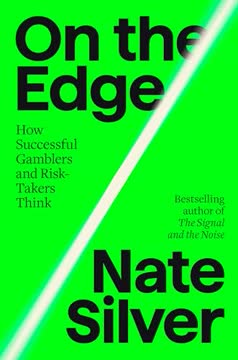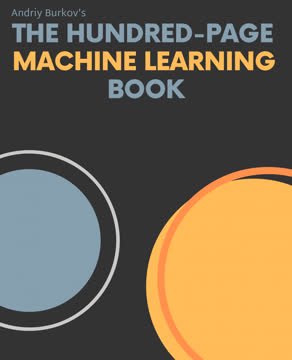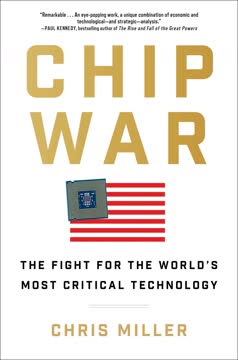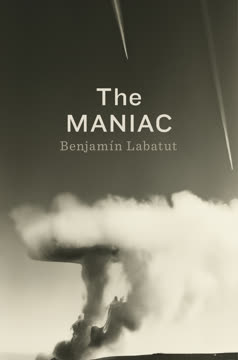Key Takeaways
1. China's Economic Boom Presents a Corruption Paradox.
Why has China’s economy grown so fast for so long despite vast corruption?
A puzzling anomaly. China has achieved unprecedented sustained economic expansion since opening its markets in 1978. This rapid growth occurred despite widespread perceptions and reports of vast corruption within the system. This juxtaposition challenges the widely held belief that corruption inevitably cripples economic development.
Challenging assumptions. Standard global indicators, like the Corruption Perception Index (CPI), often rank China as having moderately high corruption. This leads many commentators to label China a "gigantic outlier" when comparing its corruption score to its economic success. However, the author suggests this label might stem from an oversimplified view of corruption itself.
The core question. The central puzzle the book addresses is how China managed to achieve such remarkable and sustained economic growth over four decades while simultaneously grappling with a corruption problem that its own leadership deems "grave" and "shocking." Understanding this requires a deeper look beyond simple correlations.
2. Conventional Wisdom on Corruption is Too Simple.
not all types of corruption hurt growth, nor do they cause the same kind of harm.
Beyond a single score. The common understanding that "corruption hurts growth" is based on a one-dimensional view of corruption. This perspective fails to differentiate between various forms of corrupt behavior and their potentially distinct economic consequences. The author argues that lumping all corruption together obscures important dynamics.
Different effects. Just as different drugs have different effects on the human body, different types of corruption impact the economy in varied ways. Some forms are severely detrimental, acting like "toxic drugs" that drain wealth and subvert law and order. Others might have more ambiguous or even perverse short-term effects.
Revising beliefs. To truly understand China's experience, we must fundamentally revise our beliefs about the relationship between corruption and capitalism. This involves moving beyond the simple assumption that more corruption always equals less growth and exploring how the type of corruption matters.
3. Corruption Must Be Unbundled into Four Distinct Types.
Ang unbundles corruption into four varieties: petty theft, grand theft, speed money, and access money.
A nuanced framework. To move beyond one-dimensional views, the author proposes unbundling corruption based on two key dimensions: whether it involves an exchange (two-way) or theft (one-way), and whether it involves elites or non-elites. This creates a 2x2 matrix for analysis.
The four varieties:
- Petty theft: Low-level officials stealing or extorting small amounts.
- Grand theft: Elite officials embezzling large sums of public money.
- Speed money: Petty bribes paid to low-level officials to expedite services or bypass minor hurdles.
- Access money: High-stakes exchanges between elites and businesses for exclusive privileges.
Capturing complexity. This typology allows for a more granular understanding of corruption than simple "grand" vs. "petty" distinctions. It highlights that corruption can involve exchanges (like bribery) or outright theft, and that these can occur at different levels of the political hierarchy, leading to distinct behaviors and outcomes.
4. Access Money: A Double-Edged Sword for Growth.
access money – elite exchanges of power and profit – cuts both ways: it stimulates investment and growth but produces serious risks for the economy and political system.
Elite exchanges. Access money involves powerful officials and business elites engaging in high-stakes exchanges of power and profit. This goes beyond simple "greasing the wheels" (speed money) and involves buying access to lucrative deals, preferential treatment, and valuable resources like land or contracts.
Perverse stimulation. Unlike theft or petty bribery which primarily drain resources or impose costs, access money can perversely stimulate economic activity. By enabling politically connected businesses to secure large projects and financing, it can drive investment and contribute to GDP growth, at least in the short term. This makes it function like "steroids" for the economy.
Serious downsides. However, this form of corruption comes with significant risks and distortions. It misallocates resources, favors connected firms over efficient ones, exacerbates inequality, and can breed systemic financial instability. While it might boost short-term numbers, it creates vulnerabilities that can lead to crises down the line.
5. China's Corruption Has Evolved Towards Access Money.
Since market opening, corruption in China has evolved toward access money.
A changing landscape. China's corruption problem has not been static since 1978; its dominant forms have changed over time. In the early reform era, petty theft and bureaucratic extortion were more prevalent as the system transitioned from a planned economy. However, as markets deepened and the private sector grew, the nature of corruption shifted.
Rise of elite exchanges. The increasing value of state-controlled resources and the growing wealth of private entrepreneurs created fertile ground for access money. Elite officials, controlling access to land, finance, and regulatory approvals, became key players in high-stakes exchanges with businesses seeking lucrative opportunities. This form of corruption became increasingly dominant.
Declining petty forms. While access money exploded, some forms of corruption, particularly outright theft and arbitrary extortion by lower-level officials, saw relative decline. This suggests that the overall "rise" of corruption in China is better understood as a significant shift in its composition, with elite-level transactional corruption becoming the defining feature.
6. China's Corruption Structure Differs Globally.
how it differs from the West and other developing countries
Beyond aggregate scores. Comparing China's corruption solely based on bundled indices like the CPI can be misleading. While its overall score might place it alongside countries with weaker economies, unbundling reveals a distinct structure compared to many other developing nations. This qualitative difference is crucial for understanding its development path.
Contrasting patterns. China's dominance of access money contrasts with countries where petty theft, grand theft, or speed money are more prevalent. For example, some developing countries are characterized by rampant petty bribery that acts as a significant tax on citizens and small businesses, a problem less dominant in China's current structure. Others might see more outright looting of state assets by elites.
Unique mix. China's specific mix of a powerful, yet growth-oriented authoritarian state interacting with a rapidly expanding private sector has shaped its unique corruption structure. This structure, dominated by elite exchanges for development-linked privileges, sets it apart from both highly predatory states and established Western democracies.
7. Capitalism's Rise Saw Corruption Evolve, Not Disappear.
the rise of capitalism was not accompanied by the eradication of corruption, but rather by its evolution from thuggery and theft to access money.
Historical perspective. Looking beyond contemporary China, a comparative-historical lens reveals that corruption is not simply a relic of underdevelopment that disappears with capitalism. Instead, the historical rise of capitalism in various contexts, including the West, was accompanied by a transformation in the nature of corruption.
From crude to sophisticated. Early forms of corruption in developing capitalist systems often involved cruder methods like thuggery, outright theft, and blatant extortion. As institutions developed and economies grew more complex, these forms often declined, but corruption did not vanish. It evolved into more sophisticated, often less visible, and sometimes even legalized forms of access money and influence peddling.
A global pattern. China's trajectory, moving from more predatory and petty forms towards elite exchanges for economic privileges, mirrors this broader historical pattern seen in the development of capitalism elsewhere. This suggests that China is not an anomaly in having corruption alongside growth, but rather is following a historical path where the type of corruption changes with economic and institutional development.
8. Xi's Campaign Targets Corruption with Uncertain Outcomes.
how Xi’s anti-corruption campaign could affect growth and governance.
An unprecedented crackdown. President Xi Jinping launched the most vigorous anti-corruption campaign in the Party's history, vowing to target both high-ranking "tigers" and low-level "flies." This campaign has led to the investigation and punishment of a staggering number of officials across various sectors. Its intensity and duration are notable.
Potential impacts. The campaign aims to curb the rampant corruption that poses risks to the Party's legitimacy and the economy's stability. Success could lead to a more disciplined bureaucracy and a fairer business environment, potentially fostering healthier long-term growth. However, the campaign's methods and broader political implications raise questions.
Unintended consequences. The campaign's focus on loyalty and discipline, coupled with its top-down nature and suppression of independent oversight, could lead to bureaucratic paralysis and risk aversion among officials. This might stifle the very entrepreneurial spirit and adaptive governance that contributed to China's past growth, creating new challenges for the economy and governance.
9. One-Dimensional Corruption Measures Miss Crucial Nuance.
Ang challenges one-dimensional measures of corruption.
Beyond a single number. Standard corruption indices, like the CPI, provide a single aggregate score for each country. While useful for broad comparisons, this one-dimensional approach fails to capture the qualitative differences in the types of corruption prevalent in different nations. It treats corruption as a uniform problem varying only in quantity.
Obscuring reality. By bundling different forms of corruption, these measures can obscure the fact that countries with similar overall scores might have vastly different corruption structures. For example, a country might score poorly due to widespread petty bribery, while another with a similar score might be dominated by elite-level access money, each with distinct economic and social impacts.
A call for unbundling. The author's work highlights the necessity of unbundling corruption to gain a more accurate and useful understanding. By analyzing the prevalence of different types—petty theft, grand theft, speed money, and access money—researchers and policymakers can develop more targeted analyses and effective strategies for addressing corruption in specific contexts.
Last updated:
Review Summary
China's Gilded Age offers a nuanced analysis of corruption in China, challenging conventional views. Ang argues that "access money" corruption can drive economic growth while causing long-term issues. She compares China's development to America's Gilded Age and introduces an "Unbundled Corruption Index" to better understand different forms of corruption. Readers praised the book's innovative approach, thorough research, and accessible writing, though some found it overly academic. The book provides valuable insights into China's political economy and corruption's role in development.
Similar Books
Download PDF
Download EPUB
.epub digital book format is ideal for reading ebooks on phones, tablets, and e-readers.













